Niall Higgins
Feasibility of Mental Health Triage Call Priority Prediction Using Machine Learning
Nov 25, 2024Abstract:Ensuring accurate call prioritisation is essential for optimising the efficiency and responsiveness of mental health helplines. Currently, call operators rely entirely on the caller's statements to determine the priority of the calls. It has been shown that entirely subjective assessment can lead to errors. Furthermore, it is a missed opportunity not to utilise the voice properties readily available during the call to aid in the evaluation. Incorrect prioritisation can result in delayed assistance for high-risk individuals, resource misallocation, increased mental health deterioration, loss of trust, and potential legal consequences. It is vital to address these risks to guarantee the reliability and effectiveness of mental health services. This study delves into the potential of using machine learning, a branch of Artificial Intelligence, to estimate call priority from the callers' voices for users of mental health phone helplines. After analysing 459 call records from a mental health helpline, we achieved a balanced accuracy of 92\%, showing promise in aiding the call operators' efficiency in call handling processes and improving customer satisfaction.
Clustered FedStack: Intermediate Global Models with Bayesian Information Criterion
Sep 20, 2023Abstract:Federated Learning (FL) is currently one of the most popular technologies in the field of Artificial Intelligence (AI) due to its collaborative learning and ability to preserve client privacy. However, it faces challenges such as non-identically and non-independently distributed (non-IID) and data with imbalanced labels among local clients. To address these limitations, the research community has explored various approaches such as using local model parameters, federated generative adversarial learning, and federated representation learning. In our study, we propose a novel Clustered FedStack framework based on the previously published Stacked Federated Learning (FedStack) framework. The local clients send their model predictions and output layer weights to a server, which then builds a robust global model. This global model clusters the local clients based on their output layer weights using a clustering mechanism. We adopt three clustering mechanisms, namely K-Means, Agglomerative, and Gaussian Mixture Models, into the framework and evaluate their performance. We use Bayesian Information Criterion (BIC) with the maximum likelihood function to determine the number of clusters. The Clustered FedStack models outperform baseline models with clustering mechanisms. To estimate the convergence of our proposed framework, we use Cyclical learning rates.
QXAI: Explainable AI Framework for Quantitative Analysis in Patient Monitoring Systems
Sep 20, 2023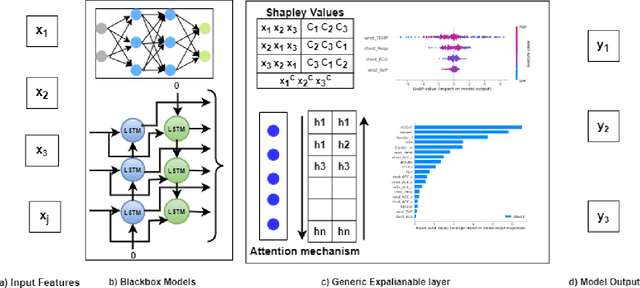
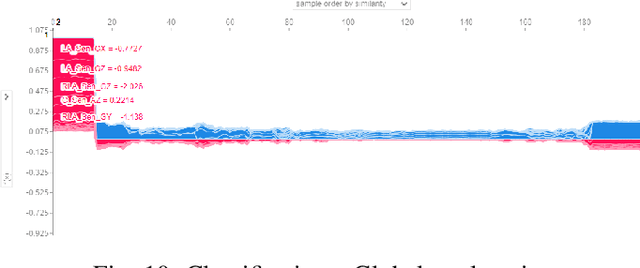
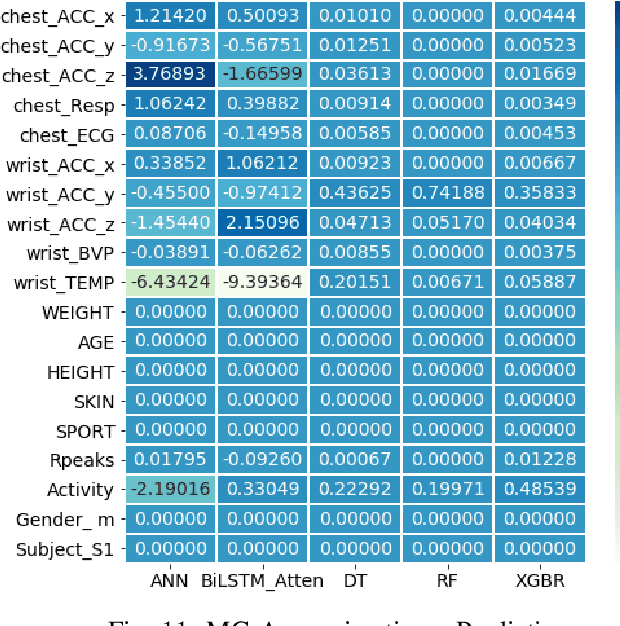
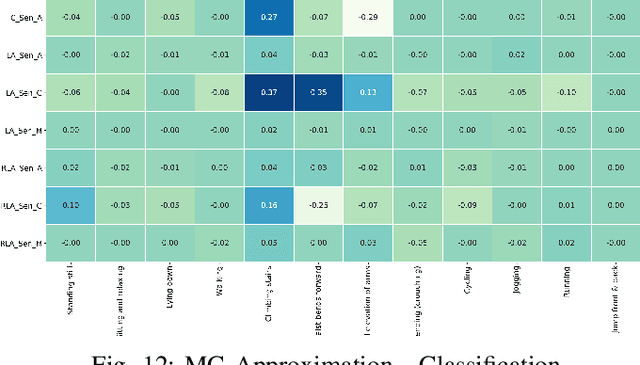
Abstract:Artificial Intelligence techniques can be used to classify a patient's physical activities and predict vital signs for remote patient monitoring. Regression analysis based on non-linear models like deep learning models has limited explainability due to its black-box nature. This can require decision-makers to make blind leaps of faith based on non-linear model results, especially in healthcare applications. In non-invasive monitoring, patient data from tracking sensors and their predisposing clinical attributes act as input features for predicting future vital signs. Explaining the contributions of various features to the overall output of the monitoring application is critical for a clinician's decision-making. In this study, an Explainable AI for Quantitative analysis (QXAI) framework is proposed with post-hoc model explainability and intrinsic explainability for regression and classification tasks in a supervised learning approach. This was achieved by utilizing the Shapley values concept and incorporating attention mechanisms in deep learning models. We adopted the artificial neural networks (ANN) and attention-based Bidirectional LSTM (BiLSTM) models for the prediction of heart rate and classification of physical activities based on sensor data. The deep learning models achieved state-of-the-art results in both prediction and classification tasks. Global explanation and local explanation were conducted on input data to understand the feature contribution of various patient data. The proposed QXAI framework was evaluated using PPG-DaLiA data to predict heart rate and mobile health (MHEALTH) data to classify physical activities based on sensor data. Monte Carlo approximation was applied to the framework to overcome the time complexity and high computation power requirements required for Shapley value calculations.
Natural Language Processing in Electronic Health Records in Relation to Healthcare Decision-making: A Systematic Review
Jun 22, 2023
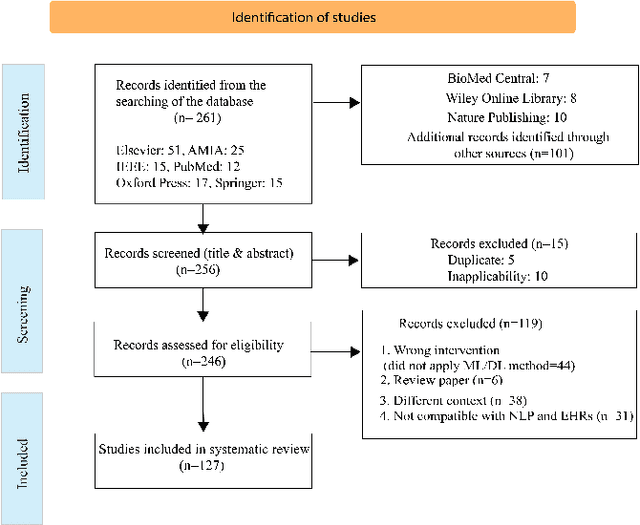
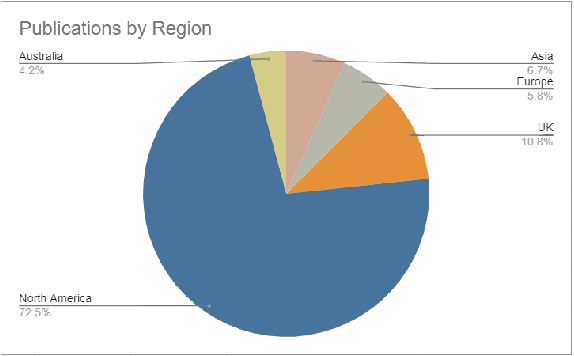
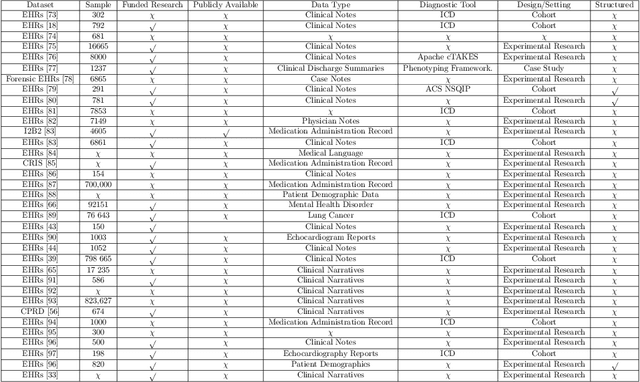
Abstract:Background: Natural Language Processing (NLP) is widely used to extract clinical insights from Electronic Health Records (EHRs). However, the lack of annotated data, automated tools, and other challenges hinder the full utilisation of NLP for EHRs. Various Machine Learning (ML), Deep Learning (DL) and NLP techniques are studied and compared to understand the limitations and opportunities in this space comprehensively. Methodology: After screening 261 articles from 11 databases, we included 127 papers for full-text review covering seven categories of articles: 1) medical note classification, 2) clinical entity recognition, 3) text summarisation, 4) deep learning (DL) and transfer learning architecture, 5) information extraction, 6) Medical language translation and 7) other NLP applications. This study follows the Preferred Reporting Items for Systematic Reviews and Meta-Analyses (PRISMA) guidelines. Result and Discussion: EHR was the most commonly used data type among the selected articles, and the datasets were primarily unstructured. Various ML and DL methods were used, with prediction or classification being the most common application of ML or DL. The most common use cases were: the International Classification of Diseases, Ninth Revision (ICD-9) classification, clinical note analysis, and named entity recognition (NER) for clinical descriptions and research on psychiatric disorders. Conclusion: We find that the adopted ML models were not adequately assessed. In addition, the data imbalance problem is quite important, yet we must find techniques to address this underlining problem. Future studies should address key limitations in studies, primarily identifying Lupus Nephritis, Suicide Attempts, perinatal self-harmed and ICD-9 classification.
AI enabled RPM for Mental Health Facility
Jan 20, 2023

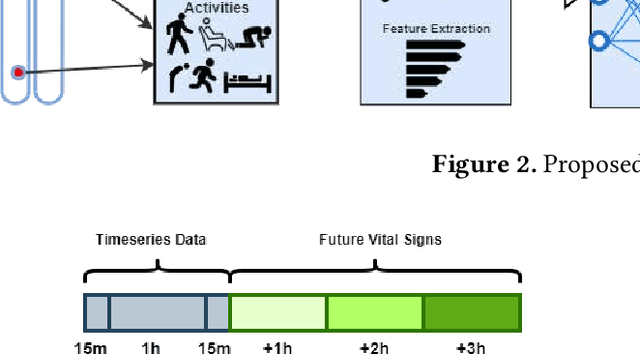
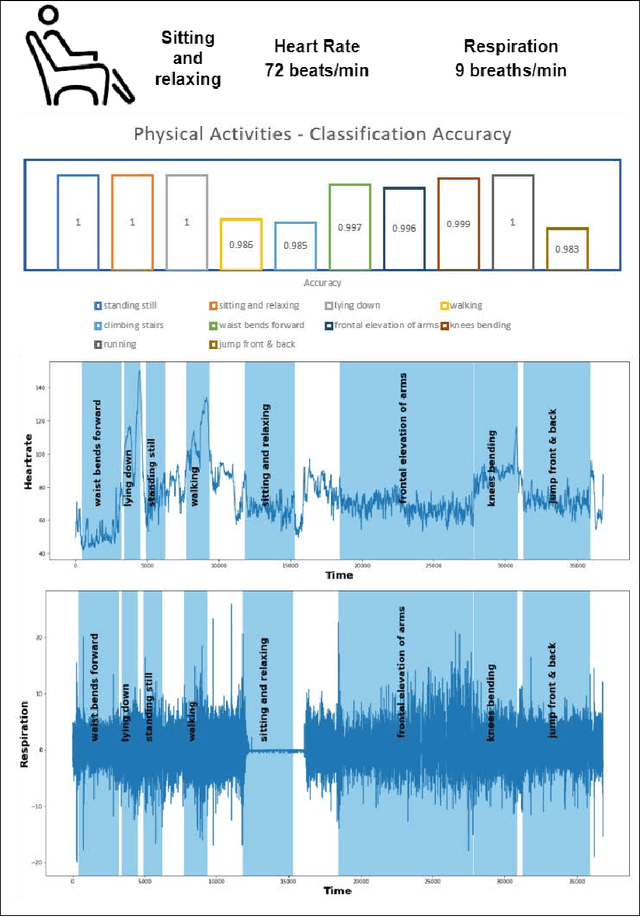
Abstract:Mental healthcare is one of the prominent parts of the healthcare industry with alarming concerns related to patients depression, stress leading to self-harm and threat to fellow patients and medical staff. To provide a therapeutic environment for both patients and staff, aggressive or agitated patients need to be monitored remotely and track their vital signs and physical activities continuously. Remote patient monitoring (RPM) using non-invasive technology could enable contactless monitoring of acutely ill patients in a mental health facility. Enabling the RPM system with AI unlocks a predictive environment in which future vital signs of the patients can be forecasted. This paper discusses an AI-enabled RPM system framework with a non-invasive digital technology RFID using its in-built NCS mechanism to retrieve vital signs and physical actions of patients. Based on the retrieved time series data, future vital signs of patients for the upcoming 3 hours and classify their physical actions into 10 labelled physical activities. This framework assists to avoid any unforeseen clinical disasters and take precautionary measures with medical intervention at right time. A case study of a middle-aged PTSD patient treated with the AI-enabled RPM system is demonstrated in this study.
Remote patient monitoring using artificial intelligence: Current state, applications, and challenges
Jan 19, 2023Abstract:The adoption of artificial intelligence (AI) in healthcare is growing rapidly. Remote patient monitoring (RPM) is one of the common healthcare applications that assist doctors to monitor patients with chronic or acute illness at remote locations, elderly people in-home care, and even hospitalized patients. The reliability of manual patient monitoring systems depends on staff time management which is dependent on their workload. Conventional patient monitoring involves invasive approaches which require skin contact to monitor health status. This study aims to do a comprehensive review of RPM systems including adopted advanced technologies, AI impact on RPM, challenges and trends in AI-enabled RPM. This review explores the benefits and challenges of patient-centric RPM architectures enabled with Internet of Things wearable devices and sensors using the cloud, fog, edge, and blockchain technologies. The role of AI in RPM ranges from physical activity classification to chronic disease monitoring and vital signs monitoring in emergency settings. This review results show that AI-enabled RPM architectures have transformed healthcare monitoring applications because of their ability to detect early deterioration in patients' health, personalize individual patient health parameter monitoring using federated learning, and learn human behavior patterns using techniques such as reinforcement learning. This review discusses the challenges and trends to adopt AI to RPM systems and implementation issues. The future directions of AI in RPM applications are analyzed based on the challenges and trends
FedStack: Personalized activity monitoring using stacked federated learning
Sep 27, 2022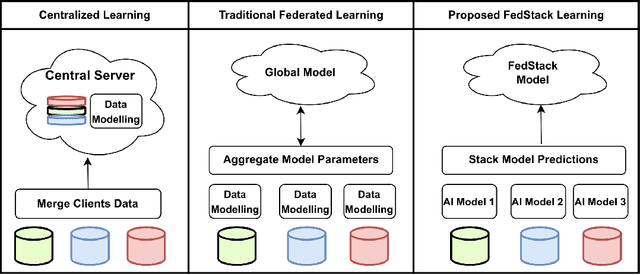
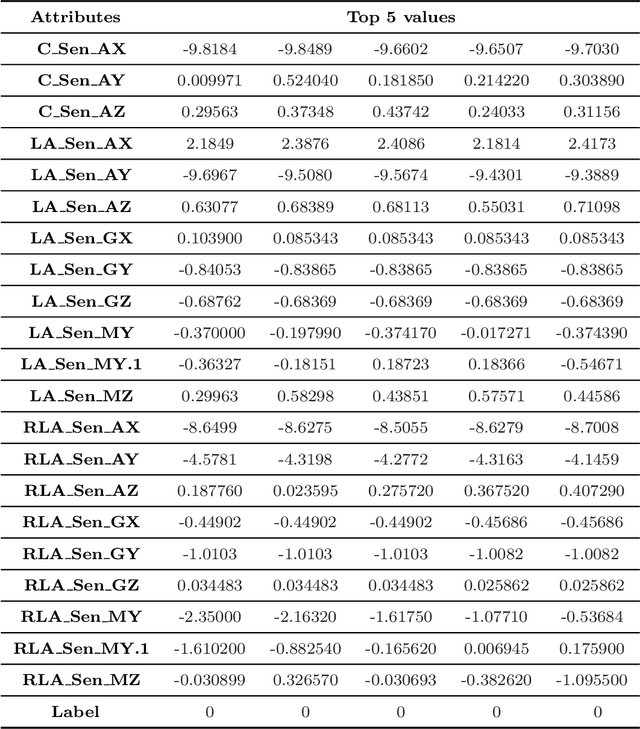

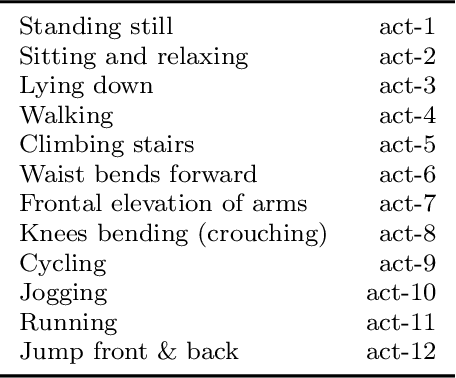
Abstract:Recent advances in remote patient monitoring (RPM) systems can recognize various human activities to measure vital signs, including subtle motions from superficial vessels. There is a growing interest in applying artificial intelligence (AI) to this area of healthcare by addressing known limitations and challenges such as predicting and classifying vital signs and physical movements, which are considered crucial tasks. Federated learning is a relatively new AI technique designed to enhance data privacy by decentralizing traditional machine learning modeling. However, traditional federated learning requires identical architectural models to be trained across the local clients and global servers. This limits global model architecture due to the lack of local models heterogeneity. To overcome this, a novel federated learning architecture, FedStack, which supports ensembling heterogeneous architectural client models was proposed in this study. This work offers a protected privacy system for hospitalized in-patients in a decentralized approach and identifies optimum sensor placement. The proposed architecture was applied to a mobile health sensor benchmark dataset from 10 different subjects to classify 12 routine activities. Three AI models, ANN, CNN, and Bi-LSTM were trained on individual subject data. The federated learning architecture was applied to these models to build local and global models capable of state of the art performances. The local CNN model outperformed ANN and Bi-LSTM models on each subject data. Our proposed work has demonstrated better performance for heterogeneous stacking of the local models compared to homogeneous stacking. This work sets the stage to build an enhanced RPM system that incorporates client privacy to assist with clinical observations for patients in an acute mental health facility and ultimately help to prevent unexpected death.
 Add to Chrome
Add to Chrome Add to Firefox
Add to Firefox Add to Edge
Add to Edge